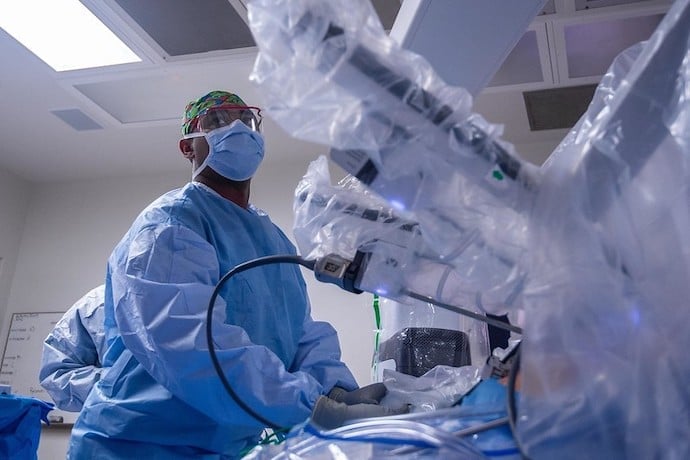How comfortable would you be with allowing a robot to perform surgery on you? What if that robot was controlled by someone on the other side of the planet? This may all sound like science fiction, but in actual fact, remote surgery is a lot more real than you may think. In fact, it has already happened!
If this is true, however, you may be wondering why our hospitals isn’t filled with robot doctors and nurses already. That’s because the technology behind a remote surgery is still pretty new, but it has been done before and it’s possible that it might develop in the future.
So, how does someone around the world from you perform surgery on you? The answer is with 5G, a term you’ve probably heard lots about before. If you haven’t, you can tell by the name that it’s the next step up from 4G, which we have all around us.
5G is more than just faster download speeds. It can also send data from one place to another at lightning speeds — even faster than fiber broadband. The term for the speed it takes from data to get from one place on the internet to another is called its “latency” (lay-ten-see).
Latency is very, very important when performing surgery across the internet. To perform remote surgery, the doctor sits by a special desk at his hospital with special controllers that mimic his hand movements. He also gets a big screen that streams the operation, so he can see what he’s doing.
The patient, on the other hand, is in a hospital somewhere else in the world. They’re under a machine that has arms that mimic what the doctor does on his end. When the doctor moves one of his controllers on his special desk. it moves the corresponding arm of the surgery machine on the other end.
This is where latency comes in. If it took even just a second for the doctor’s hand movements to arrive at the surgery machine, the doctor would feel ‘lag’ between his own movements and the machine’s. Because of this, it’d be very hard for him to do his job accurately, as his “robot hands” wouldn’t be in sync with his real ones.
At the moment, fibre broadband has a latency that’s too high for a surgical robot. 5G, however, has a really low latency. This means that, when the doctor moves his hands, the surgical robot moves its own hands at almost the exact same time. This means a doctor can accurately do their job as if they were there in the hospital.
This is a great piece of technology, because it means that doctors can apply their expertise for people around the world. Right now, if someone needs to visit a specific doctor in another country, they have to fly there or have the doctor come to them. With surgical robots, however, the patient can simply go to their local hospital and have the doctor connect through a remote surgery robot. Definitely saves on the flight tickets!
Learn More
first 5G remote surgery
https://www.youtube.com/watch?v=yFR61jjL1vo&feature=emb_title
5G remote surgery
https://www.businessinsider.com/5g-surgery-could-transform-healthcare-industry-2019-8?r=US&IR=T
5G-Powered Medical Robot
https://www.robotics.org/blog-article.cfm/5G-Powered-Medical-Robot-Performs-Remote-Brain-Surgery/213
Remote surgery
https://en.wikipedia.org/wiki/Remote_surgery
Surgeon operates from 400km away
https://www.bbc.com/future/article/20140516-i-operate-on-people-400km-away
Telesurgery: past, present and future
https://www.ncbi.nlm.nih.gov/pmc/articles/PMC6067812/
Robotic surgery during COVID
https://www.nature.com/articles/s42256-020-00238-2
Medical robots
https://www.ns-healthcare.com/analysis/medical-robots/
Social Distant surgery
https://www.courthousenews.com/socially-distant-surgery-doctor-uses-5g-to-perform-remote-operation/
5G remote surgery
https://www.businessinsider.com/5g-surgery-could-transform-healthcare-industry-2019-8
Remote brain surgery
https://www.robotics.org/blog-article.cfm/5G-Powered-Medical-Robot-Performs-Remote-Brain-Surgery/213

